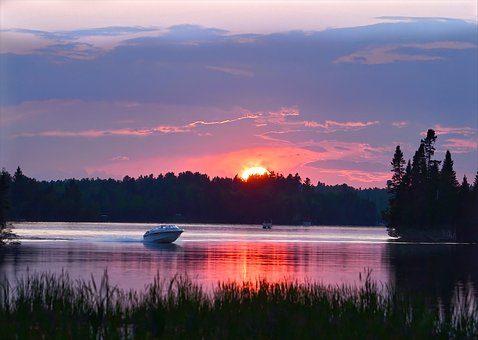One of the most precious resources in Minnesota is our pristine lakes. The value of lake property is tied to the health of the lake. If a lake is overcome with invasive species it inevitably impacts the value of lake properties. Thankfully, active and sophisticated lake associations accomplish much in the way of maintaining the health of a lake. However, associations do have some limitations that a Lake Improvement District (“LID”) can address. For example, collection of funds can be a difficult obstacle for lake associations to maintain a budget. A LID removes the difficulties associated with begging fellow lake property owners for money. It is not merely about money though as the goal of a LID is to preserve and protect the particular lake and to enhance the use and enjoyment of the lake.
A LID is a newly formed local unit of government with taxing authority that is established by resolution of the appropriate County Boards and/or city governing bodies, or by the Commissioner of Natural Resources. The County Board delegates specific authorities to the LID. The process of establishing a LID is enumerated in Minnesota Statutes and Minnesota Administrative Rules.
Process to Establish a LID
To convince the County Board to pass such a resolution a petition must be signed by at least Twenty Six percent (26%) of the proposed district property owners. There are specific legal requirements for the content of the petition. The County Board has thirty (30) days to act on a petition. Before the County Board conducts a hearing on the petition, it must notify the town board of a town wholly or partially within the boundaries and ask for a response. The County Board must also send the petition to the DNR and Pollution Control Agency for review and comment within at least 21 days prior to the public hearing. Then, within 30 days after being notified of the petition, the County Board must hold a public hearing on whether the requested LID should be established. Finally, within 30 days after holding the public hearing, the County Board shall, by order, establish or deny the establishment of the petitioned LID.
Improvements Eligible for Establishment of LID
The types of improvements eligible for the establishment of a LID include, but are not limited to, (a) studying the sources of and solutions to lake problems, (b) preserving and improving water quality by means of water and related land management, (c) sedimentation and silation control, (d) shoreline erosion control, (e) aquatic nuisance control, and (f) preserving and improving fish and wildlife habitat, (g) preserving and improving recreational potential of the lake, and (h) any other purpose approved by the County Board.
Financing LIDs
County Boards have myriad options for financing LID projects, services, and general administration. The options include, though only after seeking other sources of funding, assessing costs to benefited properties, imposing service charges, issuing general obligation bonds, levying an ad valorem tax on property within the district, or any combination of these options.
Conclusion
LIDs offer many tools and resources to preserve lake quality. Lakes that enjoy significant use, high boat traffic, and likely guest boat traffic, may find it advantageous to have a LID. Many neighboring lakes have successfully implemented LIDs. This law firm has formed a LID that has all but saved a lake that many thought at one point could not be saved and is experienced in LID development and management. A LID may not be the best option for a particular lake but it is a useful tool offered within Minnesota.

